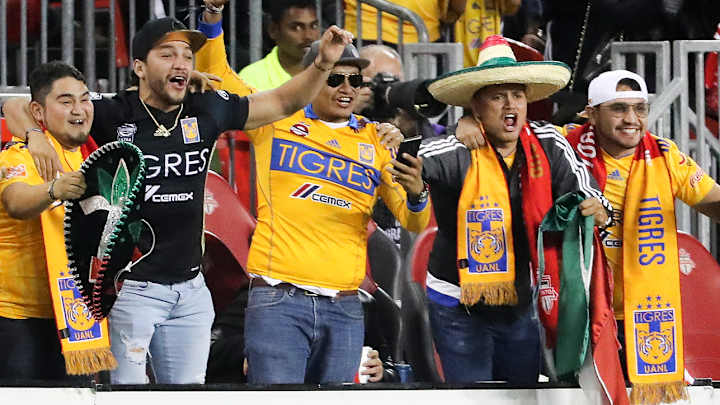Unlocking the Power of the Hispanic Soccer Fan in America

This past June, as Mexican fans were preparing to watch their team at the World Cup, Universal Pictures was also getting ready for a busy summer as its marketing team was creating a project to promote Skyscraper, the action-packed blockbuster starring Dwayne “The Rock” Johnson with a comfortable budget of $125 million.
Universal knew that in order to attract the attention of the U.S.–Hispanic market—which boasts the highest movie-going rate among any other ethnic group in the nation and a purchasing power close to $2 trillion—it had to also incorporate the interest of the Hispanic and Mexican soccer fan, given the timeliness of El Tri’s participation at the World Cup.
As a result, Universal teamed up with Mexican stars Giovani and Jonathan Dos Santos as part of the promotional tour. The incentive was obvious: a product placement strategy in order to engage and grow the Mexican-American consumer during the biggest sporting tournament in the world.
“More than 70% of the population in Mexico is interested in soccer, so big corporations like Coca-Cola, Pepsi and General Motors are already seeing the benefits of placing marketing attention in the sport, in both the U.S and Mexico,” says Dario Brignole, CEO and founder at Shine Entertainment Media, whose company represents Hispanic talent, including the Dos Santos brothers and others such as Univision’s Jorge Ramos, the influential Maria Elena Salinas and ex-players such as Gabriel Batistuta.
Brignole—who will be present at this week’s Soccerex conference, a two-day networking event in Miami that brings the global soccer industry together—believes there is a lot of opportunity for both sides to benefit. Companies and brands can build a solid relationship with the Hispanic and Latino soccer audience by directly reaching out to them, and in return, take advantage of a community who accounted for 68% of soccer’s U.S. viewership in 2017, a number that will surely increase this year.
“Both Mexico and the U.S. are going to have one of the most vibrant, wealthy and profitable soccer markets in the world and leagues, such as Liga MX and MLS, should work productively without industry politics and focus on the real growth of the sport.”
It’s just one of the reasons why the Campeones Cup was created, a match hosted in September between MLS Cup champion and Liga MX’s Campeon de Campeones winner. It’s an initiative that marks the beginning of a long-term project for both leagues, where aside from cultivating every supporter who invests in these leagues, there is also a specific attention to the MLS/Liga MX Hispanic fan.
Brignole thinks it’s a win-win: “Liga MX brings the fans, purchasing power and talent. MLS brings the wealth and the infrastructure.”
Regardless of majority viewership and how brands can connect with the Hispanic/Latino fan’s purchasing power, it’s also important for clubs and the U.S. soccer market as a whole to understand the culture of this community. Reaching out to them via language (Spanish in this case) is not enough.
“The Hispanic population in the U.S is very young, more than half is under 29-years-old, so we have to understand the best way to connect with them is through a passion point, so what better passion point than what’s rooted within our culture, which is soccer,” says Francisco Terreros, chief marketing officer of sports agency SBX Group. Terreros, who is also a registered FIFA agent, spent many years with MLS specifically helping out clubs understand how to better engage with the U.S. Hispanic fan. “So we could convert them from being Club America or Chivas fans into MLS specific fans, or continue to cultivate their Liga MX fandom here in the U.S. That’s how we’re going to succeed.”
It’s why teams such as the aforementioned Club America—arguably Mexico’s most popular team—is building offices stateside and placing a bigger focus in America. It’s also why teams like LAFC placed such an organic effort to reach this community and make Hispanics a main focus of its identity.
“I’ve had an opportunity to see games there this season and the presence of the Hispanic and Latino fan is overwhelmingly evident,” Terreros says. “So the more these teams understand different sub-cultures within their fan base and know how to cater them, they’re going to succeed and LAFC is a perfect example.”
From its origin, LAFC fans were consulted on almost every aspect of the club. From the colors, badge and stadium-design, there was a clear choice to begin with the fan’s need. With Mexican star Carlos Vela as the focus and a city with largest county of Hispanics and Latinos in the country, the obvious move is to heavily cater to this audience.
From an outreach and participation perspective, especially for the cities without a clear soccer franchise presence, there is still a need to create a better bridge of engagement to Hispanic communities across the nation. But Terreros, who will also be attending Soccerex as part of a panel that discusses the evolution of U.S soccer fan culture, thinks MLS clubs are doing a lot to grow Hispanic talent, who are young people who can simultaneously turn into fans.
“This is my day-to-day so I can proudly say that the Hispanic demographic is being highly represented,” says Terreros, who uses Real Salt Lake as an example of how a franchise reaches out to Hispanic communities on a grass roots level. “Internally, when I worked with the club, we literally helped La Barra Real how to grow and create a leadership group and anything they needed to become an official supporters’ group. Randomly enough, I was the one who designed their logo.”
As viewership in the U.S. continues to grow and soccer closes in on becoming the nation’s third most popular sport, the efforts for brands, companies and leagues to appeal to the Hispanic soccer market is absolutely necessary in order to succeed.
